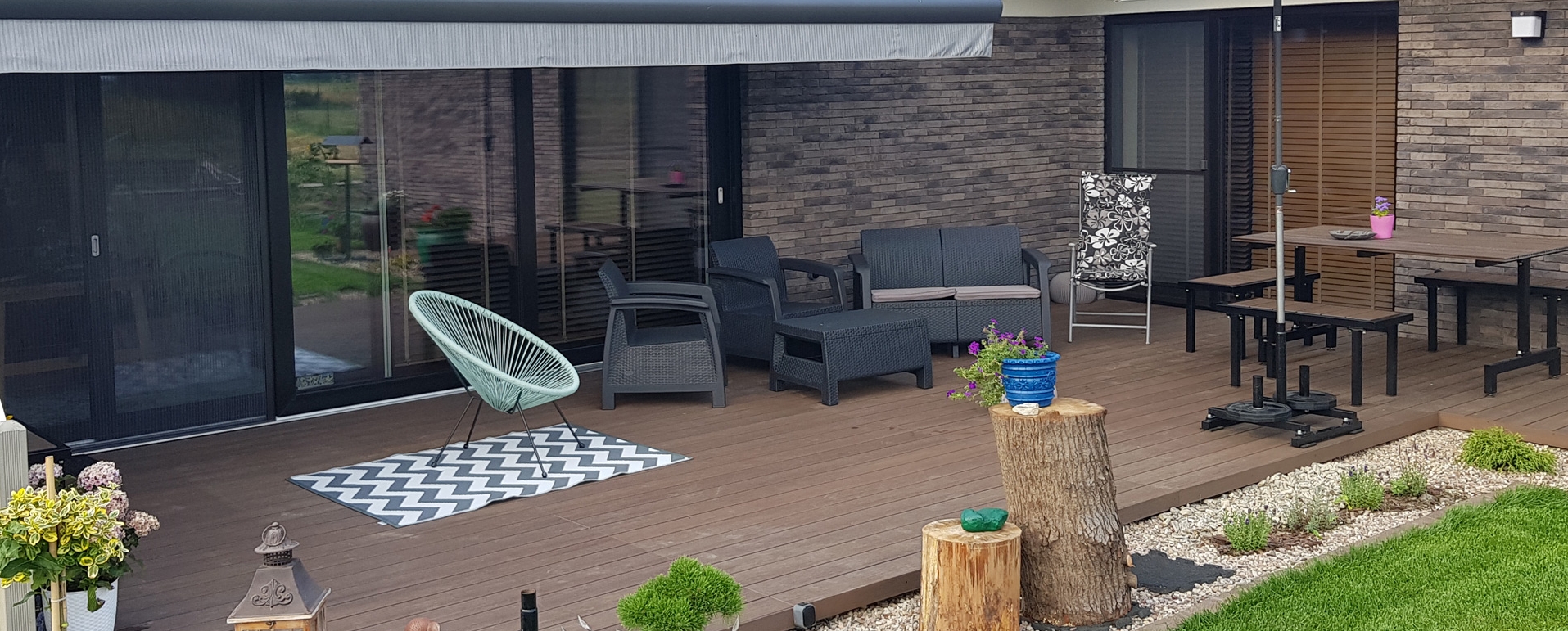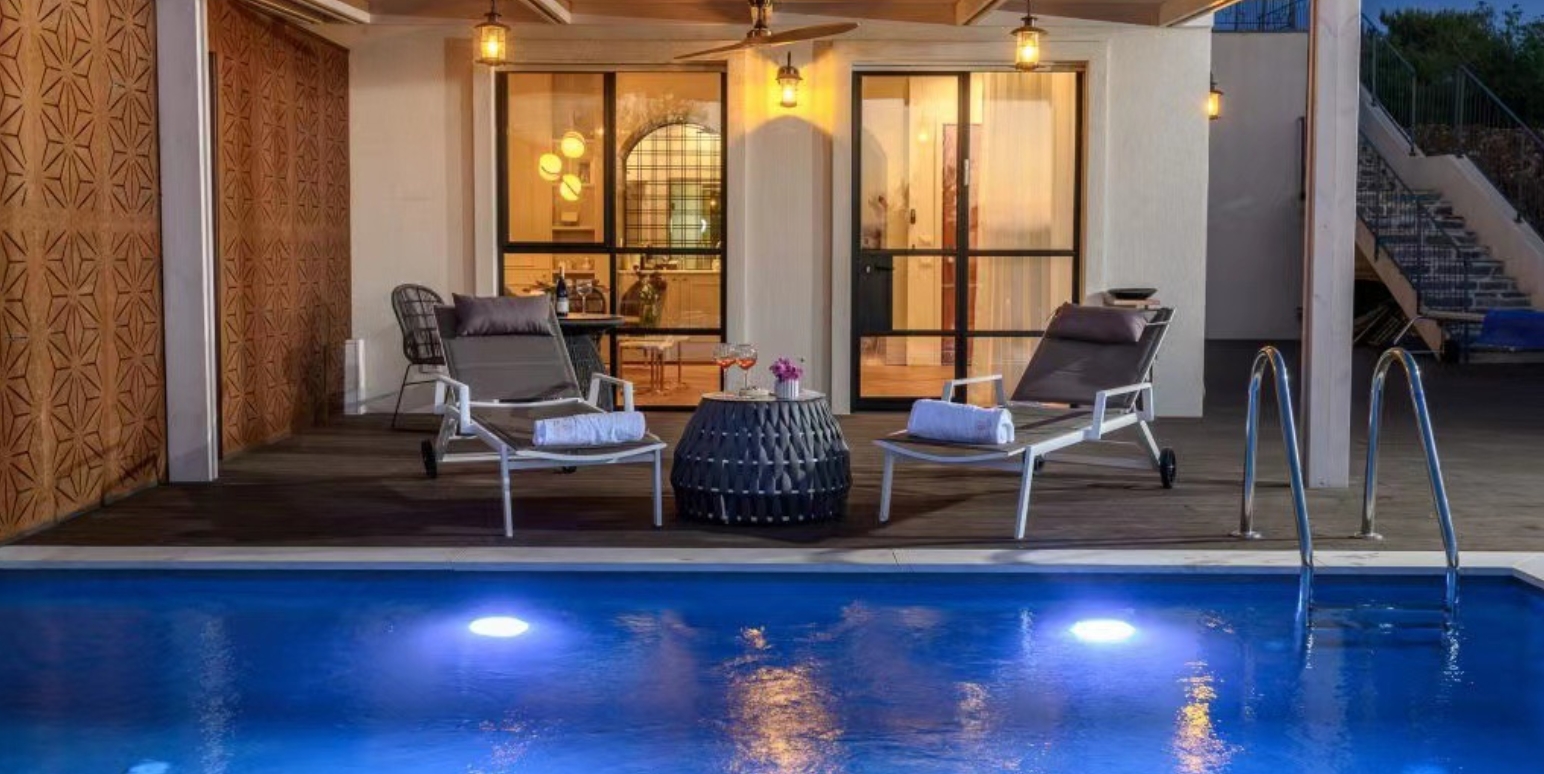Choosing the right material for your outdoor flooring is more than just a design decision—it’s a long-term investment in safety, durability, and comfort. In 2025, families are increasingly torn between the classic strength of tropical hardwood and the innovation-packed appeal of laminate (composite) decking. So, how do you choose the right one for your home?

This blog dives into the characteristics, advantages, and practical considerations of both materials—helping you decide based on your climate, lifestyle, and maintenance preferences. Whether you're building a backyard oasis, a patio for entertaining, or a safe play area for your kids, the decision matters.
🌳 What Is Tropical Hardwood? Nature’s High-End Outdoor Flooring
Tropical hardwood is harvested from dense, slow-growing trees in South America, including species like Ipe, Brazilian Teak, and Cumaru. These exotic woods are prized for their intense strength and natural beauty, making them ideal for both interior luxury design and rugged outdoor applications like decks, boardwalks, and exterior siding.
Tropical hardwoods are incredibly dense, meaning they resist warping, cracking, and splitting—common issues with standard wood. Ipe, for instance, is often called "ironwood" for a reason. Their high density helps maintain their shape, and they’re available in various sizes, making customization easier than ever.
Tropical hardwoods come packed with natural oils that act as nature’s own preservatives. They repel water, resist insect infestation, and fight off fungal growth. Even under the blazing sun or heavy rain, these woods retain their structure and beauty.
Though natural, these woods are surprisingly sustainable when sourced responsibly. They have a long lifespan—often lasting 30–50 years—which means fewer replacements and less environmental waste. Better yet, they’re recyclable and biodegradable.
🧱 What Is Laminate (Composite) Decking? Modern Innovation for Maintenance-Free Living
Laminate decking, often referred to as composite decking, is made from 95% recycled materials—primarily wood fibers and plastic film. It mimics the look of real wood while offering high performance engineered for modern lifestyles.
Built to last, composite decks resist cracking, splintering, and rotting—common pain points with natural wood. With proper care, they can last 25–35 years or more.
Unlike traditional wood, composite decking features artificial UV protection, impact resistance, and anti-scratch coatings. Some advanced products even come with heat-resistant technology to reduce overheating in direct sunlight. They’re moisture-proof, anti-swelling, and unaffected by freezing or thawing.

One of the most attractive features for families? Composite decks don’t need sanding, sealing, or staining. They’re easy to clean with just soap and water, and many designs include anti-slip grooves or textures—some even offer self-healing surfaces for minor scratches.
Both materials excel in child-friendly features. There are no sharp splinters or exposed nails, and the smooth, anti-slip surfaces reduce the risk of falls. For families with active children, safety is a top priority—and both options are solid choices.
If you're especially concerned about your child running barefoot, Praysun’s patented seamless design composite deck offers an added safety layer. With no gaps for little feet or high heels to get stuck, it’s an ideal solution for carefree outdoor fun.
Your local environment plays a huge role in determining which material will perform better long-term.
Tropical Hardwood: Excels in hot, humid, and rainy areas. Its natural oils and low water absorption help prevent decay and mold, even in tropical climates with large temperature swings.
Composite Decking: More versatile across climates. It handles snow, sun, rain, and salt with ease. However, in areas with extreme heat, be sure to choose models with heat-resistant coatings.
Tropical Hardwood: Gorgeous, but high-maintenance. To keep its rich color and luster, it needs regular oiling, cleaning, and sometimes sanding. If neglected, it can gray over time.
Composite Decking: The winner in low-maintenance lifestyles. Cleaning it once in a while with water and a brush is usually enough. No staining or sealing required.
| Feature | Tropical Hardwood | Laminate (Composite) Decking |
|---|---|---|
| Durability | ★★★★★ | ★★★★☆ |
| Weather Resistance | ★★★★★ | ★★★★★ |
| Maintenance Needs | High | Low |
| Child Safety | Excellent | Excellent (Seamless option: ★★★★★) |
| Eco-Friendliness | Recyclable, natural | Made from 95% recycled content |
| Lifespan | 30–50 years | 25–35 years |
| Surface Comfort | Natural feel | Cooler with technology options |
| Price Range | Higher upfront cost |
Mid-to-high, varies by features |
When it comes to safety, longevity, and design, you need a reliable source. Praysun offers a wide range of composite decking solutions, including their patented seamless design that prevents gaps, boosts safety, and enhances visual appeal.
Their team of experts can help you assess your needs and recommend a custom solution that fits your climate, budget, and aesthetic preferences. Whether you’re renovating your backyard or building from scratch, don’t settle—get advice tailored to your family.
In the battle of tropical hardwood vs. laminate decking, there’s no one-size-fits-all winner. Instead, your ideal choice depends on your:
Climate (humid vs. varied)
Lifestyle (low-maintenance vs. natural beauty)
Family needs (safety, barefoot comfort, longevity)
Budget (upfront vs. long-term savings)
If you love timeless elegance and don't mind a little upkeep, tropical hardwood is for you. If convenience, safety, and durability win out, then composite decking—especially seamless options from Praysun—are your best bet in 2025.
praysunmaterials@gmail.com